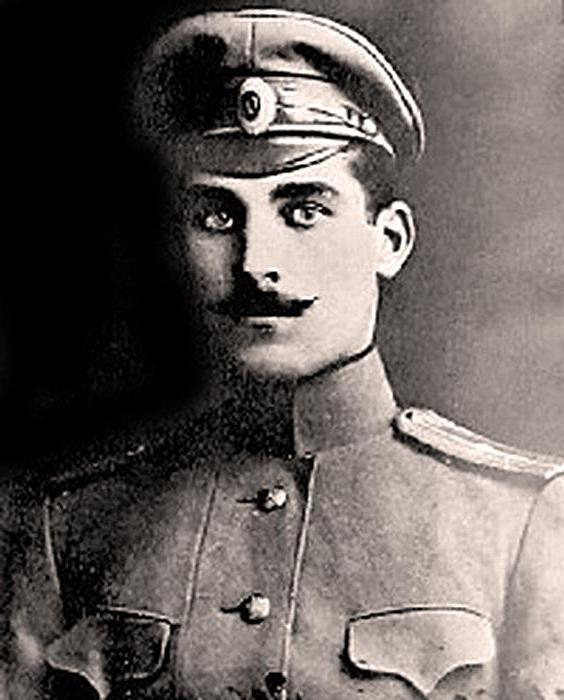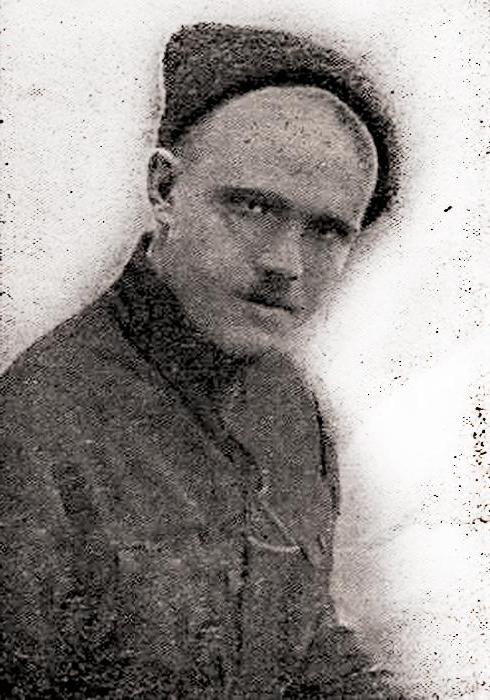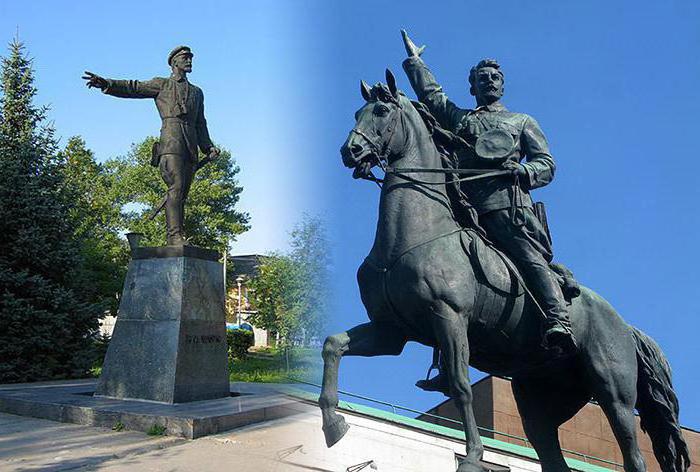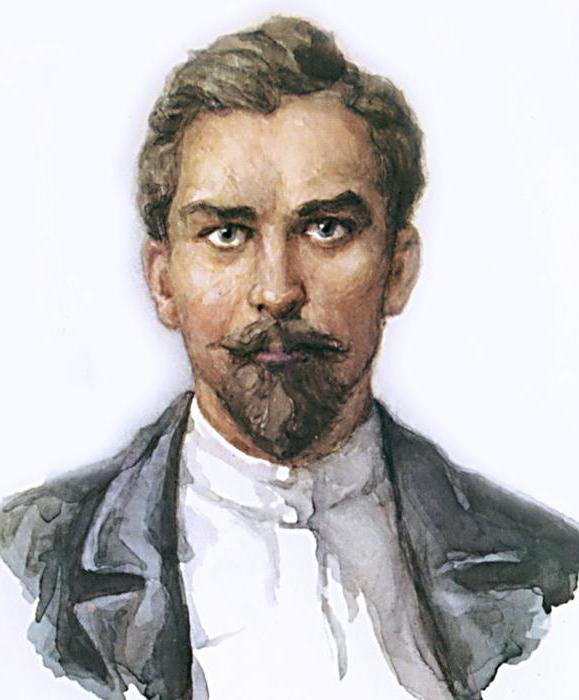It has long been known that romantics make a revolution. High ideals, moral principles, the desire to make the world a better and fairer world - only an incorrigible idealist can set such goals for himself. A similar person was Nikolai Shchors - the son of a railway worker, an officer of the tsarist army and a red commander. He lived only 24 years, but went down in the history of the country as a symbol of a just struggle for the right to live in a happy and prosperous state.
Parent house
A small wooden house, sheltering under the crown of a large spreading maple. It was built in 1894 by Alexander Nikolayevich Schors. In search of a better life, he moved to Snovsk from a small town of Stolbtsy in the Minsk Region with a 19-year-old boy. He was drafted into the tsarist army, but after the service he returned to the town he liked. Here Alexander was waiting for him - one of the daughters of the Tabelchuk family, in whom Alexander Nikolaevich rented a room. In the neighborhood with them, the newlyweds bought a piece of land and built a house on it. On June 6, their first-born, named after his grandfather, was born - Nikolai Shchors. It was 1895.
Father worked on the railway. First a handyman, a locksmith, a fireman. Then he became an assistant to the driver, and in 1904 he passed the exam for the driver - he drove a shunting engine along the Libavo-Romny railway. By this time, four more children appeared in the house. Thus began the future hero of the Civil War Shchors.
Childhood
Family life did not stand out. The father worked, and the mother was engaged in household chores and raising children. Nikolai did not cause her much trouble. The boy was smart and intelligent beyond his years. I studied at the age of six, and at the age of eight I began to attend classes with the teacher Anna Vladimirovna Gorobtsova - she was preparing children for admission to the railway parish school. In 1905, Schors began to study in it. His biography could not have developed otherwise - the boy’s craving for knowledge was extraordinary.

A year later, the family suffered grief - the mother died. She suffered from consumption and died in Belarus, where she went to visit relatives. Five children, a large farm and work on the railway. A woman is needed in the house, as the elder Schors decided. Nikolai Alexandrovich later recalled that at first he took the stepmother with hostility. But gradually their relationship improved. Moreover, the new wife of her father, her name was Maria Konstantinovna, in subsequent years gave birth to five children. The family was growing, and Kolya was the oldest of the children. He graduated from school in 1909 with a meritorious diploma and really wanted to continue his education.
Admission to military school
But my father had other plans. He hoped that his son would go to work and help the family. To understand the events that formed Schors' life history, one must imagine his immense craving for knowledge. So strong that in the end his father gave up. The first attempt was unsuccessful. Upon admission to the Nikolaev Sea Paramedic School, Kohl missed one point.
In a depressed state, the young man returned home - now he agreed to go to work at the railway depot. But suddenly his father opposed. By this time, with a good certificate, his younger brother Konstantin also graduated from school. Alexander Nikolaevich gathered both sons and drove them to enroll in the Kiev military paramedic school. This time everything turned out well - both brothers passed the entrance exams. Having allocated one ruble to his sons, a satisfied father left for Snovsk. For the first time Nikolai Schors left so far from home. A new stage in his life began.
Tsarist officer
The conditions for training at the military school were strict, but they had a great influence on the formation of the character of the future legendary commander of the Red Army. In 1914, a graduate of the Kiev military school Shchors arrived in one of the units deployed near Vilnius. Nikolai Alexandrovich began his service as a junior paramedic. Soon followed by the entry of the Russian Empire into the First World War, and the 3rd Light Artillery Division, which serves as a free-will Shchors, sent to the forefront. Nikolai endures the wounded and provides first aid. In one of the fights, the paramedic himself is injured and gets into a hospital bed.

After recovery, he enters the Vilnius Military School, which was evacuated to Poltava. He carefully studies the military sciences - tactics, topography, trenching. In May 1916, Ensign Shchors arrived in the reserve regiment, which was stationed in Simbirsk. The biography of the future commander in this period of his life made sharp turns. A few months later he was transferred to the 335th Regiment of the 85th Infantry Division. For the battles on the South-Western Front, Nikolai Alexandrovich prematurely received the rank of second lieutenant. However, the unsettled trench life and poor heredity did the trick - the young officer began a tuberculosis process. For almost six months he was treated in Simferopol. In December 1917, having been discharged from the army, he returned to his native Snovsk. Thus ended the period of service in the tsarist army.
The beginning of the revolutionary struggle
In difficult times, Nikolai Schors returned to his homeland. There was an active struggle for power between various political parties. Civil fratricidal war swept over Ukrainian lands, and soldiers returning from the front joined various armed groups. In February 1918, the Central Council of Ukraine signed a peace treaty with Germany and Austria. For a joint struggle with the Soviets, German troops entered the country.

Nikolai made his political choice at the front, when he met the Bolsheviks and understood the program of their party. Therefore, in Snovsk, he quickly established contacts with the communist underground. On the instructions of the party cell, Nikolai goes to Novozybkovsky district, to the village of Semenovka. Here he was to form a partisan detachment to fight against German troops. An experienced war veteran did a good job with the first responsible task. The combined detachment he created numbered 350-400 trained fighters and conducted military operations in the Zlynky and Klintsy districts, conducted daring partisan raids on the Gomel-Bryansk railway line. At the head of the detachment was a young red commander Schors. The biography of Nikolai Alexandrovich from that time was associated with the struggle for the establishment of Soviet power in the whole of Ukraine.
Retreat
The activity of the partisan detachment forced the German troops to incur tangible losses, and the German command decided to end its existence. With heavy fighting, the partisans managed to break out of the encirclement and retreat to the area of Unecha, which was located on Russian territory. Here the detachment was disarmed and disbanded - as the law prescribed.

Schors himself went to Moscow. He always dreamed of studying and wanted to go to medical school. The revolutionary whirlpool changed the plans of the recent war veteran. In July 1918, the First Congress of Bolsheviks of Ukraine took place, followed by the creation of the Central Committee of the party and the revolutionary committee, whose task was to create new military units from fighters of partisan detachments - Nikolai returns to Unecha. He was instructed to form and lead a regiment of local residents and fighters of the Dnieper partisan detachment. In September, the regiment was named after Ivan Bogun, the comrade-in-arms of Bogdan Khmelnitsky, who died in the Chernihiv region. In memory of these days, a monument to Schors, one of the youngest commanders of the Red Army, stands opposite the train station in Unecha.
There was a detachment along the shore
The Bogunsky regiment numbered 1,500 Red Army members and was part of the First Rebel Division. Immediately after the formation of the Red Army began to make sorties to the rear of German troops. In combat conditions, they gained military experience and obtained weapons. Later, Nikolai Shchors became the commander of the brigade, which included two regiments - Bogunsky and Tarashchansky.

On October 23, 1918, a large-scale offensive began, the purpose of which was the complete expulsion of German troops from Ukraine. Fighters liberated Klintsy, Starodub, Glukhov, Shostka. At the end of November, the Tarashchansky regiment entered Snovsk. The advancing Red Army men swiftly occupied all new cities. In January 1919, Chernigov, Kozelets and Nizhyn were taken. The ultimate goal of the offensive was the liberation of Kiev. The brigade commander was always at the forefront. The soldiers respected him for his personal courage and caring for the soldiers. He never hid behind the Red Army and did not sit in the rear. The Song of Schors, written in 1936, almost documented the soldiers' memories of their commander.
The commandant of Kiev
When approaching Kiev, on the way of the Red Army stood selective units of the Petlyura troops. Schors decides to immediately enter the battle and with two regiments, Bogunsky and Tarashchansky, attacks the position of a numerically superior enemy. On February 1, 1919, the Petlyura troops were defeated, and the Shchors brigade liberated the city of Brovary. After 4 days Kiev was taken, Shchors was appointed commandant of the capital of Ukraine. For his great contribution to the defeat of the enemy troops and for his personal courage, he was awarded with nominal gold weapons. In 1954, commemorating this heroic time, a monument to Shchors will be erected in the Ukrainian capital.

The respite between the battles was short-lived. The brigade again entered the hostilities and freed Berdichev and Zhytomyr. In March 19th, Shchors became the commander of the First Ukrainian Soviet Division. Petliurists suffered one defeat after another. The Red Army liberated Vinnitsa and Zhmerinka, Shepetovka and Rivne. The division was replenished with recruits from among local residents, but combat commanders were sorely lacking. On the initiative of Schors, a military school was created, in which 300 of the most experienced Red Army men with front-line experience were sent to study.
Fatal bullet
In June 1919, the Revolutionary Military Council reorganized the Ukrainian Front. Shchors' division became part of the 12th army. Behind the compound was already a solid combat experience and glorious victories. It is hard to imagine that the commander of the division was only 24 years old. Shchors really possessed amazing military talent. But this was the reason why superior forces of the enemy were advanced against his formation.

Under the pressure of a numerically superior enemy, the Shchorsovites retreated to the Korosten region. On August 30, division commander N. A. Shchors, his deputy I. N. Dubovoi and political commissar Tanhil-Tanhilevich arrived in the Bogun division, which held positions near the village of Beloshitsa. Being at the forefront of the defense, Nikolai Shchors was wounded in the head. I.N.Dubovoi made a dressing for him, but after 15 minutes the divisional commander died. His body was sent to Klintsy, and then to Samara, where he was buried. Thus ended the life of one of the youngest and most talented commanders of the Civil War.
Strange story
In 1949, when the reburial of the remains of N. A. Schors took place, a previously unknown detail was revealed. A deadly bullet was fired from a short-barreled weapon and entered the back of the head of a fearless division commander. It turns out that Schors died at the hands of a man who was at a close distance behind him. Various versions appeared - death at the hands of the “Trotskyists” and even the revenge of the Bolsheviks on the intractable and popular commander in the army.
The name of N. A. Schors was not forgotten, and his exploits were immortalized by many monuments, names of streets and cities. The people still hear the “Song of Schors” - a courageous and selfless man who until the last minute of his life believed in the possibility of building a fair and honest state.